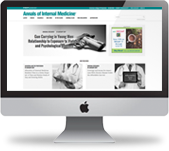Putting patients before paperwork, and playing Whack-a-Mole
ACP has decided to once again take on the problem of excessive paperwork and other administrative burdens, including those imposed by the advent of electronic health records.
Of all the things that physicians find maddening, administrative hassles likely would top most of their lists. Whether it is insurance company preauthorizations, or reports on quality metrics, or unworkable electronic health records (EHRs), physicians feel they are distracted and diverted from what they love most, which is taking care of patients.
This is nothing new, of course. I remember writing a white paper in 1998 on the “hassle factor” stemming from managed care. Yet here we are, more than 15 years later, and physicians perceive that things haven't gotten any better and in many ways have gotten worse. For a time, there was a hope that modern-day information technology would improve things, making it easier for physicians to document services for insurance companies, report on quality measures, and share information among themselves. But poorly designed EHRs, due in large part to the government's meaningful use rules, have become yet another hassle factor, adding minutes to physicians' already busy days.
However, professional associations like ACP can offer hope by approaching the issue differently than in the past. Typically, we have tried to get government or the insurance industry to change one particularly troublesome paperwork requirement, sometimes with some success, only to see another one take its place, like the arcade Whack-a-Mole game. Plus, organized medicine's advocacy has usually approached “hassles” from the perspective of why they make things harder for doctors, when what is really needed is to demonstrate how they hurt patients.
As part of a broader effort to improve the joy of practice, ACP has decided to once again take on the problem of excessive paperwork and other administrative burdens, taking into account what worked or didn't work in the past. Called “Patients Before Paperwork,” this initiative will try to eliminate or at least mitigate the highest-priority administrative challenges and educate members on how to address those that can't be removed in the least burdensome and most efficient manner possible.
The initiative will conduct a systematic review of the literature on the impact of administrative requirements on patients. How do they contribute to the cost of health care that is borne directly or indirectly by patients, or contribute to hurried visits because physicians have to devote more and more time to dealing with administration rather than spending it with patients?
A recent ACP study reported in JAMA Internal Medicine found that the mean loss for attending physicians associated with their EHRs was 48 minutes per clinic day, 4 hours per each 5-day clinic week. How much do excessive paperwork and unworkable EHRs contribute to physician burnout, and most important, what is the impact of physician burnout on patient care, physician supply and availability, early physician retirement, or physicians not going into primary care? Also, where are the gaps in the literature?
The initiative will develop a prioritized list of the administrative challenges that our members feel it is most important for the College to address. ACP has surveyed representative samples of membership and conducted focus groups and found that the top 3 are EHRs, quality reporting, and getting insurance companies to pay for their services. Prioritization is important to avoid the Whack-a-Mole syndrome, enabling ACP to marshal resources to tackle the challenges that will have the greatest impact.
For each priority “hassle,” we need to determine why it exists. There usually is a well-intentioned reason behind the hassle. For instance, preauthorization is intended to protect patients from inappropriate or even harmful care and excessive costs; meaningful use rules for EHRs are intended to make sure that the systems help improve patient safety.
Once one understands the desired intent, it becomes possible to ask whether there a better way of meeting that intent by eliminating, changing, or replacing it. Can it be streamlined and harmonized? Can technology help?
We need to partner with others to bring about change, especially with patient advocacy groups. Physicians on their own can only get so far in pressuring government, insurers, and EHR companies to ease hassles, but think how much could be accomplished if consumer groups, businesses, labor, and others were working together to ease the highest priority administrative challenges. To get them on our side, we will need to document the impact on patients, understand the intent, and offer alternatives.
Taking on administrative hassles may seem like the ultimate quixotic “tilting at windmills” effort. We could just say we've been there, done that, things didn't get better, what's the point of our trying again? The point, though, is that ill-considered administrative challenges are contributing to physician burnout, adding costs to patients and to the health care system, and taking time away from patient care. What can be more important than asking government, insurers, and EHR vendors to help physicians put their patients before paperwork?




